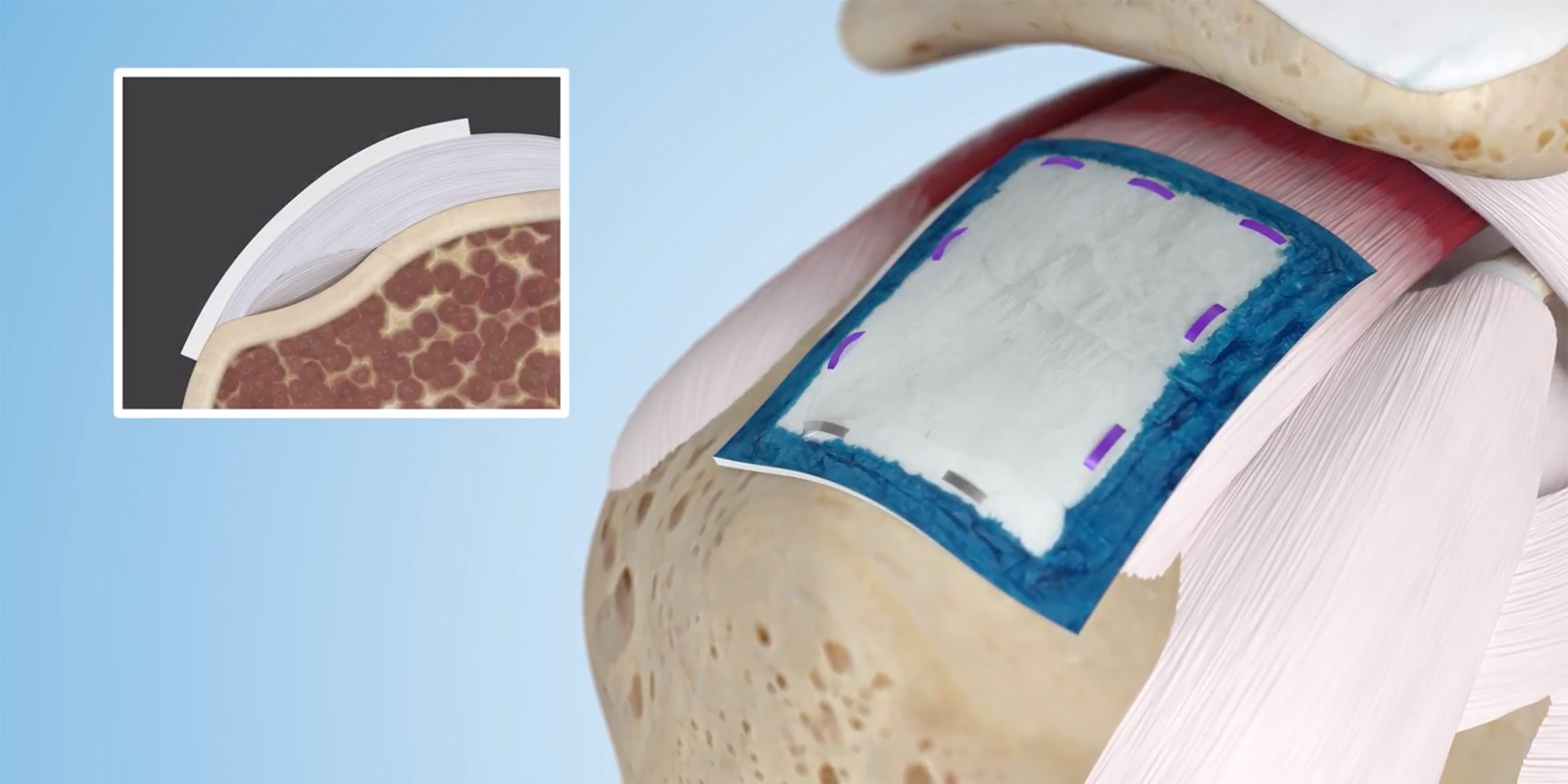Regeneten Patch for Rotator Cuff & Shoulder Repair Surgery
Revolutionizing Rotator Cuff Repair with the Regeneten Patch.

Rotator cuff tears come in many different shapes and sizes:
- Full-thickness rotator cuff tears: This means that some of the rotator cuff is completely torn off of the bone.
- Partial-thickness Rotator cuff tears: This means that the rotator cuff may be torn, but at no point is it completely detached from the bone.
The decision to fix a full-thickness rotator cuff tear is simple. Active patients who have pain or weakness because of their tears do well when we fix the rotator cuff.
The decision to fix a partial thickness tear can be difficult. The standard technique for fixing partial-thickness tears involves completing the tear, and then repairing it in the standard fashion, like a full-thickness tear. Some of the cuff may be perfectly fine, so deciding to complete the tear is not easy. We estimate the percentage of the cuff that is torn and then fix tears that are torn more than 50%. Schedule a rotator cuff repair surgery with a Regeneten patch consultation today.
How does the Regeneten patch change this decision-making process?
By placing a Regeneten patch over a partial thickness tear, we can keep the remaining cuff intact and then add thickness to it with the patch. We can be more aggressive with our decision to fix the cuff, without having to put patients through the long rehab process associated with a full-thickness cuff tear.
How does the Regeneten patch work?
The Regeneten patch is placed over the partial thickness tear. The rotator cuff then grows into the patch, adding thickness above the degenerated portion of the cuff. This additional thickness takes stress off of the degenerated part of the cuff, allowing it to heal. MRI studies typically demonstrate 2-3 mm of increased thickness of the rotator cuff after fixing it with a collagen patch.
Progression of Healing - Rotator Cuff Patch Surgery Recovery Time
What about the results?
I have been using the Regeneten patch for rotator cuff repair for 2 years now, and I have had excellent clinical results. The rehab process is 1/2 as long and patients can start working on active and passive motion of the shoulder earlier in this process. Most patients who have undergone rotator cuff repair with the Regeneten patch are back to most of their normal activities by four months.
Show me the evidence.
The evidence for fixing rotator cuffs with the Regeneten patch is convincing. The most convincing studies are MRI studies and they look at the thickness of the cuff before and after placing the patch. I like MRI studies because they are subjective. I have attached references to these studies below if you are interested.
How to know if you are a candidate for fixing your rotator cuff with the patch?
An MRI will show us the extent of tearing in your rotator cuff. If the tearing is less than about 70%, and your cuff looks healthy then you may be a candidate for a repair with the Regeneten patch. If you need rotator cuff or shoulder repair surgery using a Regeneten collagen patch, call and schedule an appointment with me and we can go over your MRI together. If you have not yet had an MRI, make an appointment with us and we will get this ordered for you.
Watch a video demonstrating how the Regeneten patch works.
Studies
- Schlegel TF, Abrams JS, Bushnell BD, Brock JL, Ho CP. Radiologic and clinical evaluation of a bioabsorbable collagen implant to treat partial-thickness tears: a prospective multicenter study. J Shoulder Elbow Surg. 2018;27(2):242-251. doi: http://dx.doi.org/10.1016/j.jse.2017.08.023
- A systematic review of cost-effective treatment of postoperative rotator cuff repairs. Dickinson RN, Kuhn JE, Bergner JL, Rizzone KH. JSES (2017) 26, 915-922
- REBUILD Registry data on file as of October 2017, with enrollment and follow-up ongoing
- Bokor DJ, Sonnabend D, Deady L et al. Evidence of healing of partial-thickness rotator cuff tears following arthroscopic augmentation with a collagen implant: a 2-year MRI follow-up. MLTJ. 2016;6(1):16-25.
- Bokor DJ, Sonnabend D, Deady L et al. Preliminary investigation of a biological augmentation of rotator cuff repairs using a collagen implant: a 2-year MRI follow-up. MLTJ. 2015;5(3):144-150.